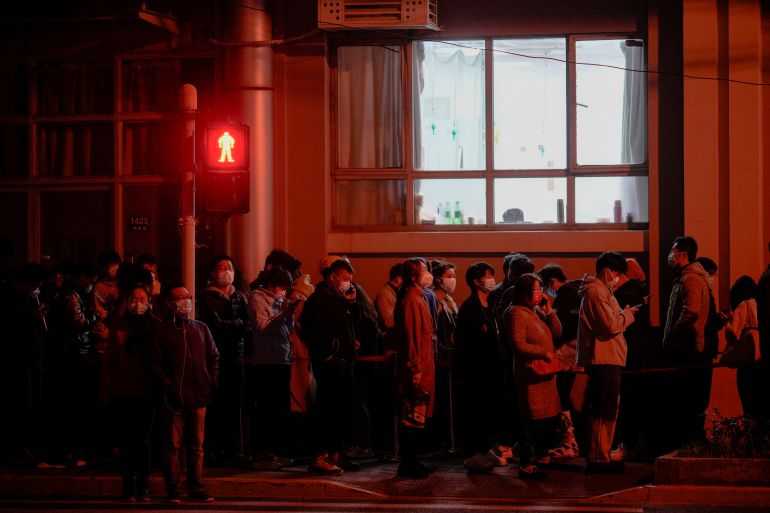China: Shanghai to lock down for testing as COVID surges
The financial hub of 26 million people has become a testing ground for China’s ‘zero-COVID’ policy.

China’s financial hub of Shanghai says it will lock down the city in two stages to carry out COVID-19 testing over a nine-day period, after it reported a new daily record for asymptomatic infections.
Authorities said on Sunday they would divide Shanghai into two for the exercise, using the Huangpu River that passes through the city as a guide. Districts to the east of the river, and some to its west, will be locked down and tested between March 28 and April 1. The remaining areas will be locked down and tested between April 1 and 5.
Keep reading
list of 4 itemsChina COVID cases more than double in growing outbreak
China limits concerns on Ukraine to self-interest
Searchers find second black box from crashed China Eastern flight
Public transport, including ride-hailing services, in these areas will be suspended when they are locked down, the city government said on its official WeChat account, adding that unapproved vehicles will not be allowed on the roads.
It also said that all companies and factories will suspend manufacturing or work remotely during the lockdown, apart from those involved in offering public services or supplying food.
“The public is asked to support, understand and cooperate with the city’s epidemic prevention and control work, and participate in nucleic acid testing in an orderly manner,” the government added.
Shanghai has battled a new COVID-19 surge for nearly a month and on Saturday it reported its highest daily number of cases since the initial outbreak in China receded. The city recorded 2,631 new asymptomatic cases, which accounted for nearly 60 percent of China’s total new asymptomatic cases that day, plus 47 new cases with symptoms.
While the number of cases in Shanghai remains modest by global standards, the city of 26 million people has become a testing ground for China’s “zero-COVID” strategy as it tries to bring the highly infectious Omicron variant under control.
Shanghai authorities have previously resisted a broad lockdown of the city to avoid destabilising its economy and opted for a more bespoke “slicing and gridding” approach, which involves screening neighbourhoods one by one.
More than 14 million Shanghai residents have taken antigen tests, the Shanghai Municipal Health Commission said on Sunday.
But some residents have grumbled about seemingly endless cycles of testing and the piecemeal approach to ending transmission chains, with some saying the cost of zero-COVID had become too high.
Frustrations have also been felt elsewhere in China.
Earlier this month, in footage shared on social media, a crowd of people in the northeastern city of Shenyang banged against the windows of a clothing market as they shouted in frustration at yet another round of COVID-19 tests.
China reported a total of 4,448 new asymptomatic infections on March 26, up from 4,430 a day earlier, including 1,007 new cases in the northeastern province of Jilin, currently under lockdown.
The country reported 1,254 new confirmed cases with symptoms, down from 1,335 a day earlier. Of the new cases, 1,217 were locally transmitted, versus 1,280 a day earlier.
There were no deaths reported on March 26, leaving the death toll at 4,638. As of March 26, mainland China had confirmed 143,240 cases of COVID-19.